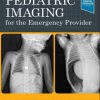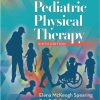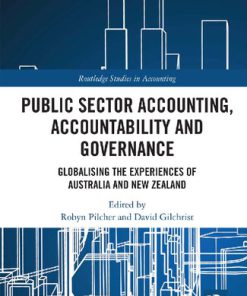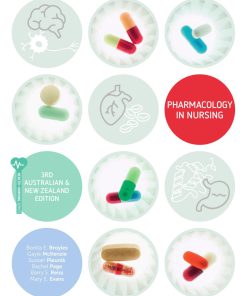Paediatric Nursing in Australia and New Zealand 3rd Edition by Jennifer Fraser, Donna Waters, Elizabeth Forster, Nicola Brown ISBN 9781108984652 1108984657
$50.00 Original price was: $50.00.$25.00Current price is: $25.00.
Paediatric Nursing in Australia and New Zealand 3rd Edition by Jennifer Fraser, Donna Waters, Elizabeth Forster, Nicola Brown – Ebook PDF Instant Download/Delivery: 9781108984652 ,1108984657
Full download Paediatric Nursing in Australia and New Zealand 3rd Edition after payment
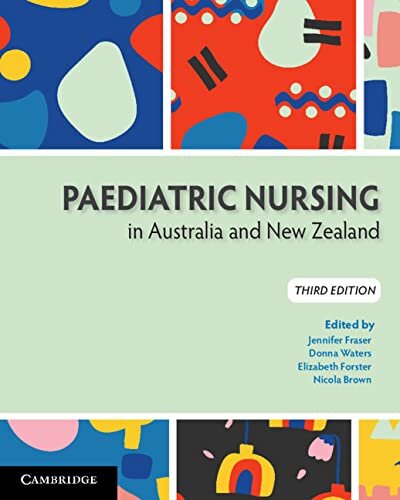
Product details:
ISBN 10: 1108984657
ISBN 13: 9781108984652
Author: Jennifer Fraser, Donna Waters, Elizabeth Forster, Nicola Brown
The health of babies, children and young people is fundamentally different from that of adults, so their healthcare must reflect their unique needs and engage their parents, family members and communities. Paediatric Nursing in Australia and New Zealand introduces nursing students to the care of infants, children, young people and their families in a range of clinical and community settings across Australasia. This third edition includes New Zealand content and an increased focus on families. New chapters cover health services available for Aboriginal, Torres Strait Islander and Māori children, the transition to parenthood for new families, children’s sleep patterns and behaviour, and paediatric health in school settings. Case studies and reflective questions encourage students to develop critical thinking and problem-solving skills. Written by an expert team, Paediatric Nursing in Australia and New Zealand equips future nurses with the knowledge and skills to provide evidence-based care to babies, children and their families.
Paediatric Nursing in Australia and New Zealand 3rd Edition Table of contents:
Part A Contexts of nursing care
1 Children and young people of Australia and New Zealand
Introduction
Monitoring health and wellbeing
Indicator measurement
Our children and young people
Health and wellbeing
Chronic conditions
Healthy development
Homes and families
Mothers and babies
Infants
Children
Childhood injury
Chronic diseases of childhood
Social and emotional health in childhood
Young people
Youth overweight and obesity
Youth injury
Youth substance use
Youth social and emotional health
Partnering with children and young people
Summary
Learning activities
Further reading
References
2 Child rights in Australia and New Zealand
Introduction
International convention
Australian and New Zealand legislation, charters and standards
Practice implications
Access to family
Vulnerable populations
Australian and New Zealand age-of-majority legislation
Priorities in relation to children’s rights and child-protection legislation
The responsibility to report child maltreatment
Summary
Learning activities
Further reading
References
3 Health services for New Zealand Māori and Aboriginal and Torres Strait Islander Australian children and young people
A note on terminology
Introduction
Cultural safety
Māori tamariki and rangatahi
Aboriginal and Torres Strait Islander children and young people
The health status of Māori tamariki and rangatahi
Historical factors and Te Tiriti o Waitangi
Māori Health Trends Report
He Korowai Oranga (Māori Health Strategy)
District Health Boards
Health Alliances
Child and Youth Wellbeing Strategy
The Ministry of Children
Whānau Ora
Tamariki and rangatahi health and community services
The Well Child Tamariki Ora Programme
SmartStart
Plunket
Kids Health NZ
Whānau stories
Aboriginal and Torres Strait Islander children and young people
Historical journey
The health status of Aboriginal and Torres Strait Islander children and young people
Cultural determinants of health
Cultural safety in paediatric nursing practice
Roles of health professionals working with Aboriginal and/or Torres Strait Islander children, their families and the wider community
Establishment of Aboriginal organisations and services including Aboriginal Community Controlled Organisations for self-determination
Summary
Learning activities
Acknowledgements
Further reading
References
4 Research with children and youth
Introduction
Research and evidence
What is research?
Generating new knowledge through research
Clinical audit and benchmarking
Translating knowledge from research
What is evidence?
Evidence-based practice
Evidence implementation
Researching with children and young people
Human research and ethics
History and human research ethics
Principles of human research ethics
Research merit and integrity
Autonomy and respect for persons
Assent and consent in research with children and young people
Opting-in, opting-out and refusal to participate
Standing parental consent
Beneficence
Best interests
Level of risk
Justice
Human research ethics committees
Meaningful research participation
Partners in research
Supporting participation
Partners in evidence implementation
Summary
Learning activities
Further reading
Evidence-based practice
Ethical conduct of research involving children and young people
References
Part B Nursing infants, young children and their families
5 Working with new families throughout the transition to parenthood
Introduction
Preconception and antenatal care
Preconceptual and antenatal health and wellbeing
Preparation for parenting
Antenatal education
Birthing choices
Monitoring of maternal health in the antenatal period
Monitoring of foetal growth and development
Discomforts of pregnancy
Mental health and wellbeing during pregnancy
Postnatal care
Postnatal care of the mother
Postnatal care of the newborn infant
Assessment of newborn transition
Respiratory changes
Circulatory changes
Thermoregulation
Fostering attachment and bonding in the early postnatal period
Infant care: Focus on feeding
Breastfeeding
Supporting breastfeeding
Feeding infants with a bottle
Summary
Learning activities
Further reading
References
6 Supporting families to manage child behaviour and sleep patterns, and promote optimal child development
Introduction
Current issues in child health and development
Children’s health and development: A snapshot
Determinants of children’s health and development
Child development: A social ecological model
The family environment
Optimising child development
Partnering with families to support child development
Managing behaviour
Behavioural development in childhood
Risk factors and consequences of behavioural problems
Approaches to behaviour management
Principles for managing behaviour
1. Have realistic expectations
2. Build positive parent–child relationships
3. Encourage desirable behaviours
4. Use effective discipline strategies
Sleep
Sleep in childhood
Approaches to managing sleep
Principles for supporting healthy sleep
1. Establish a regular sleep pattern
2. Have a consistent bedtime routine
3. Provide a comfortable sleep environment
4. Time daily activities to promote sleep
5. Use positive parenting strategies to manage problem behaviours
Healthy lifestyle
Nutrition and physical activity
Screen use
Principles to support a healthy lifestyle
1. Set realistic goals and identify obstacles
2. Provide plenty of opportunities to engage in healthy behaviours
3. Work together as a family
Summary
Learning activity
Further reading
References
Part C Nursing children and young people
7 School health, health promotion and health education
Introduction
School nursing
Variable role responsibilities
Conceptual frameworks for school nursing practice
Prevention level approach
Professionalising school nursing practice
School nurse expertise
Health promotion in the school setting
Health Promoting Schools Framework
School nursing within the HPS Framework
Australian Student Wellbeing Framework
Fundamentals of health education
Health literacy promotion
Effective communication
Adult-focused health education and professional development sessions
Classroom-based health education
Pedagogical considerations
Differentiated instruction and a safe and inclusive learning environment
Promoting student participation
Healthy growth and development
Priority health and wellbeing concerns
Addressing priority health and wellbeing concerns
Tackling childhood obesity
Pivotal role of schools
Primary prevention
Secondary prevention
Tertiary prevention
Summary
Learning activities
Further reading
References
8 Mental healthcare for children and adolescents
Introduction
Mental health problems and mental disorders
Attention Deficit Hyperactivity Disorder (ADHD)
Nursing assessment and interventions
Autism Spectrum Disorder (ASD)
Nursing assessment and interventions
Externalising disorders: Oppositional Defiant Disorder (ODD) and Conduct Disorder (CD)
Internalising disorders: Anxiety and depression
Risk and protective factors
Promoting mental health in children and young people
The spectrum of child and youth mental health
Promoting resilience to support mental health in children and young people
Being valued, loved and safe
Promoting positive participation
Fostering a positive sense of identity and culture
Managing disordered eating and eating disorders experienced by children and young people
Mental health and technology: Nursing children and young people in the technological age
Twelve practical strategies for promoting mental health in children and young people
Summary
Learning activity
Further reading
References
9 Child and family: Psychosocial considerations and response to illness
Introduction
The psychosocial development of children and young people experiencing disruptions to health
Erikson’s theory of psychosocial development
Trust versus mistrust: Infancy (first year of life) and the sick infant
Attachment theory
Nursing assessment and interventions
Autonomy versus shame and doubt: Infancy (second year of life) and the sick toddler
Initiative versus guilt: Early childhood – the preschool years (3–5 years)
Industry versus inferiority: Middle and late childhood (primary school – 6 years to puberty)
Identity versus identity confusion: Adolescence (10–20 years)
Translation to practice and transition to adult care
Intimacy versus isolation: Early adulthood (twenties and thirties) and the sick young adult
Family considerations
Contemporary families
The Family Partnership Model
Family-centred care
Family assessment
Family genogram/ecomap
Family development
Family roles and functions
Family strengths
Stressors
Coping strategies
Considerations and challenges in conducting family assessments
Summary
Learning activities
Further reading
References
10 The acutely ill or injured child and adolescent: Nursing assessment and interventions
Introduction
Key nursing considerations for the acutely unwell child and adolescent
Fever
Dehydration
Assessment of dehydration
Hydration and diet for children with acute gastroenteritis
Intravenous therapy
Preparing the child and family for intravenous cannulation
Monitoring the intravenous site and infusion
Intravenous fluids: Types and volumes
Administering oral medications
Pain assessment and management
Observational and behavioural pain-assessment tools
Self-report tools
Pain management
Common acute illnesses in childhood and adolescence
Febrile seizures
Acute respiratory illness
Respiratory tract infections
Croup
Bronchiolitis
Asthma
Pneumonia
Acute otitis media
Abdominal pain
Assessment and management
Appendicitis
Injuries in children and adolescents
Head injury
Assessment and management
Musculoskeletal injuries
Assessment and management
Alcohol intoxication
Assessment and management
Paediatric perioperative care
Pre-operative care
Parental presence during induction of anaesthesia
Post-operative care
Summary
Learning activities
Further reading
References
11 Recognising and responding to the sick child
Introduction
Paediatric characteristics that increase the risk of illness and deterioration
Structured assessment of the paediatric patient
The Paediatric Assessment Triangle
The Primary Assessment Framework
Recognition of clinical deterioration using a Primary Assessment Framework
A – Airway
B – Breathing
Chest recession or retractions
Breath sounds and air entry
Oxygen saturation
C – Circulation
Heart rate and rhythm
Blood pressure
Peripheral pulses and perfusion
Capillary refill
Urine output
D – Disability
Paediatric neurological assessment tools
Responding to the sick child
Respiratory support
Airway and breathing
Oxygenation
Circulatory support
Paediatric sepsis
Paediatric basic and advanced life support
Parental presence during resuscitation
Summary
Learning activity
Nasopharyngeal suctioning and bronchiolitis
High-flow nasal cannulae therapy and bronchiolitis
Further reading
References
12 Evidence-based care of children with complex medical needs
Introduction
Chronic health conditions associated with complex medical needs
Down syndrome
Characteristics of Down syndrome
Families and children with complex medical needs
Nursing assessment and interventions
Respiration
Oxygen therapy
Tracheostomy and ventilation
Mobility
Nutrition and hydration
Enteral feeding
Communication
Transition to adult care
Important considerations during transition
Successful transition
Summary
Learning activity
Further reading
References
13 End-of-life and palliative care in paediatric care settings
Introduction
Pain
The WHO analgesic ladder
Side-effects of opioids
Non-pharmacological pain relief
Neurological symptoms
Fatigue
Dyspnoea
Gastrointestinal disturbances
Anxiety
Communication with children and adolescents
Communication and the family in paediatric end-of-life care
Culturally safe end-of-life care
Siblings
Grandparents
Self-care and professional boundaries
Summary
Learning activities
Further reading
References
Index
People also search for Paediatric Nursing in Australia and New Zealand 3rd Edition:
paediatric nurse new zealand
paediatric nursing skills for australian nurses
pte band requirement for nursing in australia
paediatric nursing qut
queenstown new zealand nursing jobs
Tags: Jennifer Fraser, Donna Waters, Elizabeth Forster, Nicola Brown, Paediatric Nursing, New Zealand
You may also like…
Business & Economics - Mathematical Economics
Uncategorized
Mathematics - Mathematical Statistics
Politics & Philosophy - Government & Politics
Redefining Citizenship in Australia Canada and Aotearoa New Zealand Jatinder Mann
Travel - Australia & Oceania - Travel
Commercial & Financial Law
Travel - Australia & Oceania - Travel
Fodor’s Essential New Zealand 3rd Edition by Fodor’S Travel Guides 9781640974746 1640974741

